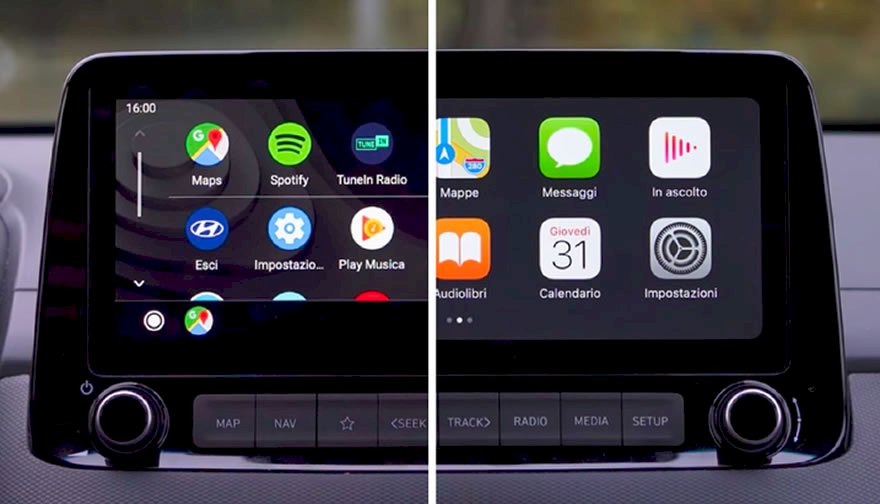Android Auto & Apple CarPlay: l'infotainment evoluto
Technology runs fast, yes.Technological progress now embraces many sectors of our daily lives: the use of smartphones, notebooks, smartwatches and of course the world of cars.
In this latter field, mirroring systems are emerging: the direction is to bring the devices used every day closer to the infotainment systems.Current standards allow the connection of Apple and Android devices via Apple CarPlay and Android Auto.To connect the smartphone to the infotainment system you will need a car model that supports the 2 technologies, a USB cable or, in more recent models, only the WiFi connection.
Once the systems are connected, the smartphone will have a new interface directly on the infotainment screen thus allowing access to the smart functions that we are used to using.From interacting with voice assistants to checking the phone, from browsing on Google Maps, to sending Whatsapp messages rather than listening to a playlist on Spotify.
Both platforms will be able to receive notifications and read the text of the messages received from the major messaging platforms on the market today: it will also be possible to respond and interact via voice commands, without ever taking your hands off the wheel.More and more mobile applications designed to be compatible with mirroring systems thus offering new ideas and opportunities for manufacturers and developers, so much so that they deserve a dedicated category in the Apple store and in Google Play.To find out if your car is compatible or to be guided in the purchase, here are 2 useful links:Android:
//www.android.com/auto/compatibility/Apple:
//www.apple.com/it/ios/carplay/available-models/

Technology runs fast, yes.
Technological progress now embraces many sectors of our daily lives: the use of smartphones, notebooks, smartwatches and of course the world of cars.
In this latter field, mirroring systems are emerging: the direction is to bring the devices used every day closer to the infotainment systems.
Current standards allow the connection of Apple and Android devices via Apple CarPlay and Android Auto.
To connect the smartphone to the infotainment system you will need a car model that supports the 2 technologies, a USB cable or, in more recent models, only the WiFi connection.
Once the systems are connected, the smartphone will have a new interface directly on the infotainment screen thus allowing access to the smart functions that we are used to using.
From interacting with voice assistants to checking the phone, from browsing on Google Maps, to sending Whatsapp messages rather than listening to a playlist on Spotify.
Both platforms will be able to receive notifications and read the text of the messages received from the major messaging platforms on the market today: it will also be possible to respond and interact via voice commands, without ever taking your hands off the wheel.
More and more mobile applications designed to be compatible with mirroring systems thus offering new ideas and opportunities for manufacturers and developers, so much so that they deserve a dedicated category in the Apple store and in Google Play.
To find out if your car is compatible or to be guided in the purchase, here are 2 useful links:
Android:
//www.android.com/auto/compatibility/
Apple:
//www.apple.com/it/ios/carplay/available-models/